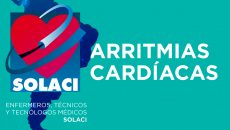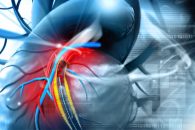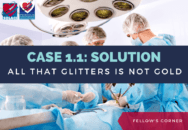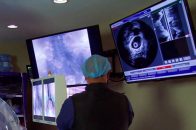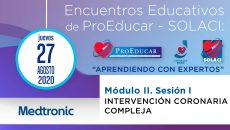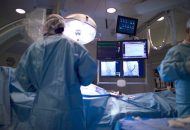Aspirin discontinuation 1 to 3 months after angioplasty with continued P2Y12 inhibitor therapy reduces the bleeding risk without an increase in thrombotic events. This is also the case for patients admitted with acute coronary syndrome. Dual antiplatelet therapy with aspirin and a P2Y12 inhibitor has been shown to reduce the risk of major events compared with…
SOLACI Webinar | Cardiac Arrhythmias
Watch again our Webinar on “Cardiac Arrhythmias” on our Youtube account. We are interested in your opinion. Please, leave your comments, thoughts, questions, etc., below. They will be most welcome.
Is the Paradigm for Bifurcation Lesions Changing Once More?
Four years ago, we published a summary of the SMART-STRATEGY Study saying that, with bifurcation lesions, “less is more.” Last month, the DEFINITION Study published in the European Heart Journal suggested that things were about to change. Today, the DK-crush technique seems to have rendered both title and article obsolete. According to this recent analysis…
LATAM: Information on the Impact of the Pandemic with a Focus on MI
There are several studies from all corners of the world (China, Europe, USA) presenting data on the impact of COVID19 on interventional cardiology in general, and on MI in particular. What is new about this study is that it presents data on LATAM and that it has been published in an international magazine. Seldom do…
The Fellow’s Corner | 1st Clinical Case: All That Glitters Is Not Gold
We present the first clinical case in the section “The Fellow’s Corner”, aimed at fellows in Latin America who wish to learn and always be up to date in interventional cardiology. Leave your thoughts in the comment section of this article and join the conversation! Case Authors: Jair Suriano Martins (ARG), Leonardo Ripa (ARG). Moderator:…
SOLACI Webinar | Cardiac Arrhythmias
We are interested in your opinion. Please, leave your comments, thoughts, questions, etc., below. They will be most welcome.
IVUS in Every Step of Complex Angioplasty
Complex angioplasties require not only experience and patience but also technology. Imaging–guided pre-dilation, stent sizing, and post-dilation reduced the cardiovascular events after a 3-year follow-up in patients who received drug-eluting stents in complex angioplasties. This paper, recently published in JACC Interventions, compared the 3-year outcome of the complex angioplasty optimization technique with intravascular imaging to…
3° ProEducar Educational Meeting – Complex Coronary Intervention
We are interested in your opinion. Please, leave your comments, thoughts, questions, etc., below. They will be most welcome.
Myocardial Injury for COVID-19 Even in Young Patients with Mild Symptoms
Most young COVID-19 patients not requiring hospitalization showed abnormal cardiac magnetic resonance imaging (CMR) beyond two months after diagnosis. Myocardial injury had been found in more serious cases, but not in a healthy population recovered at home. The increasing evidence of the virus’ capacity to directly affect the heart across the whole population and disease…
Early Activation to Speed-Up Treatment of Infarcted Patients
Cath lab activation—and everything that entails—within 20 minutes was associated with the target of performing primary angioplasty in under 2 hours in at least 75% of patients. Historically, door-to-balloon time was measured, which provided a rough idea of where there could be flaws to fix. This is particularly true in the case of patients who need to…
Is Medical Treatment Better at Lowering Bleeding-Caused Mortality than Angioplasty?
Post-discharge bleeding in patients admitted for acute coronary syndrome (ACS) is linked to higher all-cause mortality. However, this is the case for both patients who underwent angioplasty and those who were managed with medical treatment. These are interesting data, given that medical treatment is frequently preferred due to lower bleeding risk. Speculation is based on…

